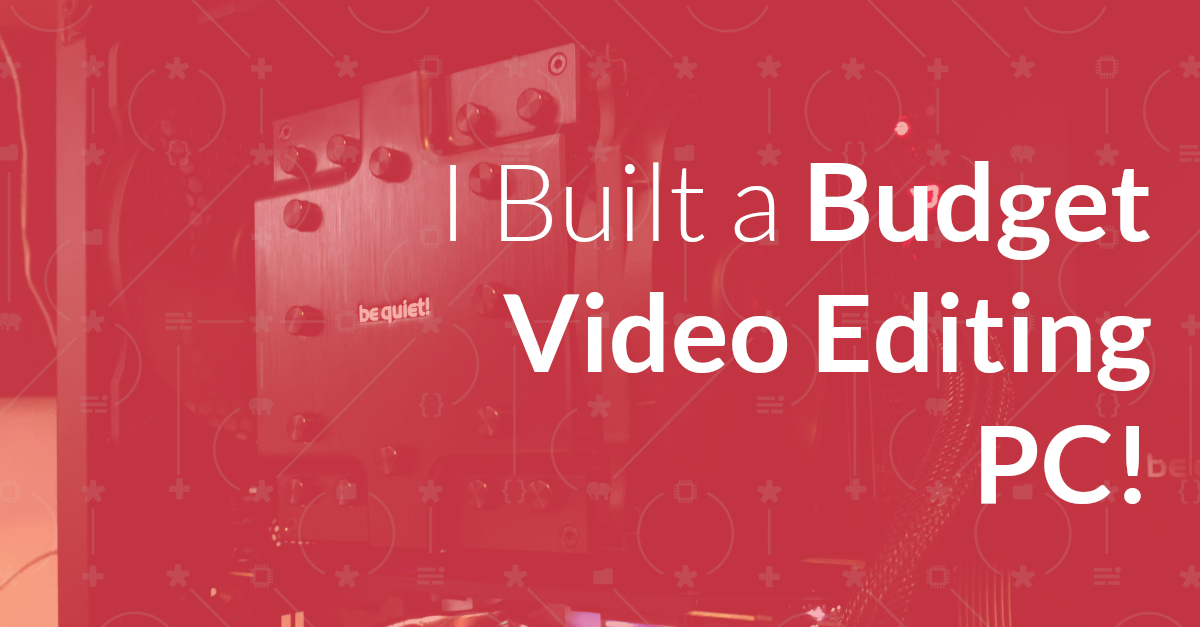
The Birth Of A New Screencasts Site
This is a post I’ve been meaning to write for some time. It makes sense as it’s a business I’ve
Today, I’ll show you a 7-step workflow for producing a professional video tutorial every time, regardless of your product or service.
Today, I’ll show you a 7-step workflow for producing a professional video tutorial every time, regardless of your product or service.
Screencasts, video tutorials, online video learning. Call it what you will, but using video is not only and exciting and engaging way to teach, it’s also becoming the norm, helping businesses and organisations stand out in an increasingly over-crowded online space.
Even if you’ve never even made one before, not even have the software installed; by the end of this tutorial, you’ll know the 7 basic steps for making a great video tutorial – promise!
The emphasis will be on technical education, but only a little bit of ingenuity’s required to adapt the process to your product.
Like anything which you want to do well, you need to plan. The 5 P’s sums it up best: Proper** Planning Prevents Poor P**erformance. I couldn’t agree more. So, sit down, whether on your own or with someone in your business and map out the structure of your screencast.
Ask yourself the following questions:
Video tutorials (or Screencasts), when done well, focus on one point only. If you try and cover multiple things, you’ll likely overload the user with too much information. So keep it simple, both for them to consume and for your to produce and stick to one topic.
Then, continue brainstorming by asking yourself these questions:
You want to inspire them to go further when your screencast’s finished. But don’t go overboard. Whilst it’s great to do a lot, don’t overload the user and don’t overload yourself. Stay focused on your topic.
Now that you’ve brainstormed what you’re going to teach, what you’ll need and what you’ll provide in addition, start storyboarding, making your thoughts more cohesive and structured. There are a number of ways of doing this, but I prefer one of two ways:
Whilst there are a wealth of online services and desktop apps, including DraftIn, Mou and iA Writer, sometimes pen and paper are equally as effective, readily available, environmentally friendly and low cost. So don’t go past using a series of pieces of paper which you can easily and continuously reorganise on your desk.
Gingkoapp, is my standout favourite. I’ve been using it for a little over two months now and it’s nothing short of brilliant. You can think of it as the online version of pen & paper.
You can create a series of cards in a tree-like hierarchy, which you can rearrange just by dragging them from one parent card to the next. What’s more, it supports the Markdown format, so you can quickly add basic formatting, such as bold, italics, links and headings without having to learn HTML.
Either way, set out the chapters of your tutorial, adding a basic description to each one, then flesh them out, adding emphasis, links and related information as needed. When you’re comfortable with the content in each one, rearrange them until the structure has a clear and logical flow to it.
Right, you’ve brainstormed and storyboarded. But you’re not ready to go yet. One tip I picked up from the folks at Wistia, one which I can’t recommend highly enough, is the table read. Seriously! If you take nothing else away from this post – do this!
What is a table read? As its name implies, print out your finished script, ideally, or have it handy on your smartphone or tablet, and read it aloud. Don’t just read through it in your head, read it out aloud. It’s amazing how easy some passages are to write, but when spoken can be quite difficult to pronounce, be tongue-twisting, or sound plain silly.
Read through the script a number of times refining the dialog, editing out parts which are too difficult or don’t make sense, adding in parts you’ve missed. An added bonus of doing this, is that you become a lot more familiar with your material, which pays off in a more fluid and confident voice when recording.
Ok, now that you’ve walked through your script, you need to walk through the code you’ll execute during the screencast. As with the table read-through, the code walk-through is equally as essential.
The last thing you want to do is waste time going through the code, only to find issues with your environment, such as missing libraries or packages, permissions on directories you’ll need, such as for logging and caching or other issues which will prevent you from creating a fluid presentation.
So go over it, ideally 3 times at a minimum. If you find issues, correct them and go over the code again. When you’re done, you’ll know the code in your presentation inside and out and be more confident when presenting it.
Now that you’re ready to start shooting, start with shooting the code. Read through the script, as though you were recording the audio and video together. This has the benefit of helping you pace yourself; plus, when you shoot the audio afterwards, you will reduce the amount of editing you’ll need to do to combine the two later in post-production.
Now that the code’s recorded, record your audio separately. The reason for this is largely a personal preference. Though I started including the keyboard sound which initially gave me the feeling of producing a more “real” recording, after a while I’ve found it distracting.
I recommend using either GarageBand if you’re on the Mac or Audacity if you’re not. Both are free and simple to use. Read through your script again, make sure you give it lots of energy and enthusiasm.
The last thing you want to do is to record a boring presentation and put people off to sleep. If you want some good tips on producing high quality audio, checkout Podcast Answer Man. Cliff does a great job of taking you through all the right equipment and techniques to make your audio sound amazing.
Ok, you have the video and audio. Now you need to combine them. There are loads of options for software to do this, but personally, the simplest application I’ve come across is Screenflow on the Mac. I hear equal enthusiasm for Camtasia as well, available on Windows. But I don’t have personal experience with it, so can’t personally vouch for it.
First, add in your media files, the audio and video. Then drag them both onto the timeline. Separate the audio from the video and then add in the separately recorded audio track. With that done, run through the production, ensuring that the audio and video are in sync, cutting out ums, aahs, a majority (but not all) mistakes and sound dead zones.
When that’s done you want to export it. Ideally, export it to the highest quality you can. The reason being is that a lot of services, such as Wistia, Vimeo and YouTube will perform post-processing, or transcoding, on your screencast, potentially resulting in a reduced quality file. So you want to start from the best you can produce to lessen the odds of a poor end result.
Right, this marks the end of how to make a great video tutorial. I hope you’ve enjoyed it and learned a lot from it. If there’s anything I’ve missed or haven’t detailed sufficiently, let me know in the comments. I’m keen to hear how you’re doing.

This is a post I’ve been meaning to write for some time. It makes sense as it’s a business I’ve

Yesterday, I published a short course on deploying with Docker Compose to my YouTube channel. In this post, Today, I’m stepping through what it took to create the short course, from start to finish.

If you want a simpler way to mix a podcast with Audacity, here’s what I’ve learned lately.

After many years of seemingly endless struggle and frustration while creating online courses and content, I’m cautiously optimistic that things are about to get a lot better, as I have a new, dedicated video-editing PC.
Please consider buying me a coffee. It really helps me to keep producing new tutorials.
Join the discussion
comments powered by Disqus